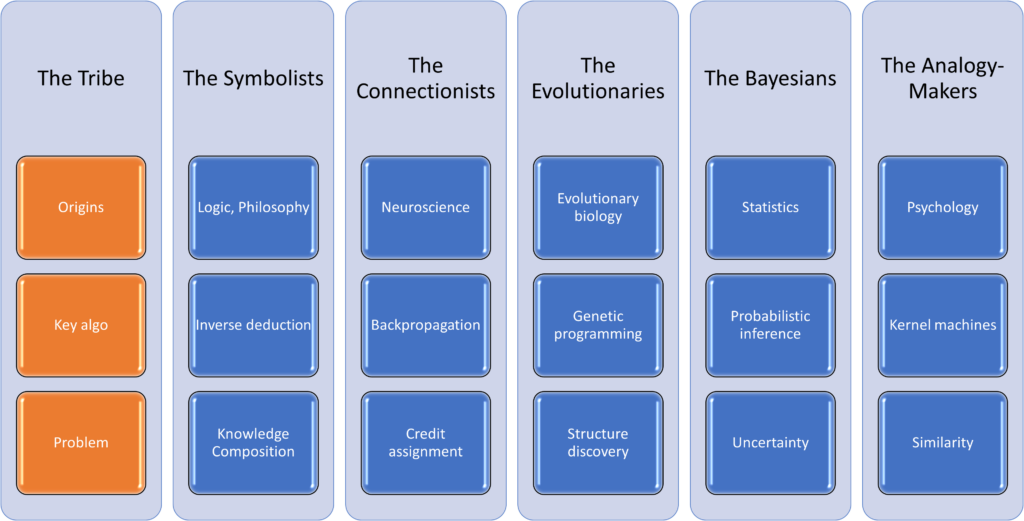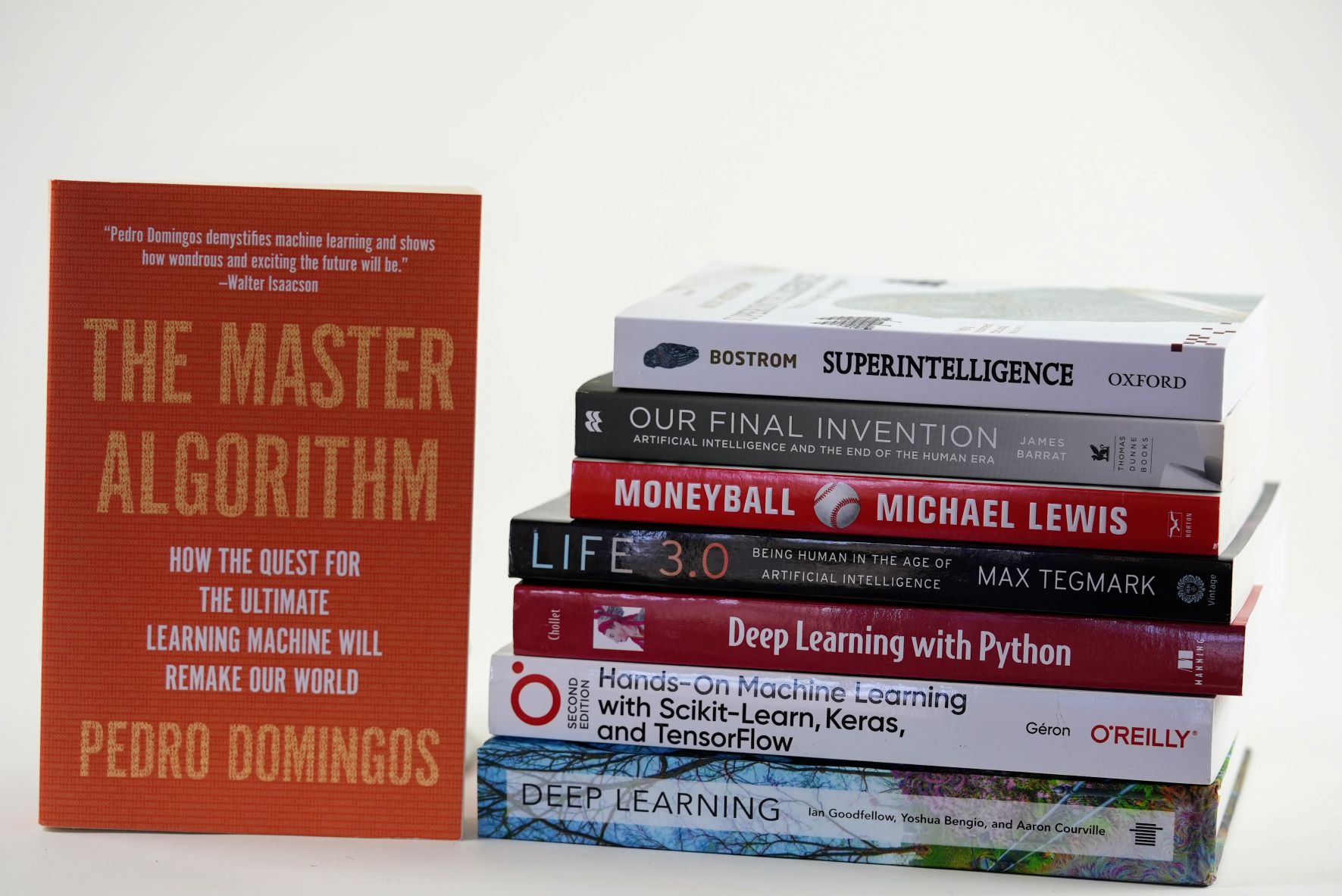“The Master Algorithm,” by Pedro Domingos, is my second most favorite book on Artificial Intelligence, and one of the most comprehensive and thought-provoking explorations of the field of machine learning and its potential to revolutionize a wide range of industries and disciplines.
First of all, who is Pedro Domingos?
Pedro Domingos is a leading AI researcher and, obviously, the author of this bestseller, “The Master Algorithm”, an introduction to machine learning for a general audience.
While not writing bestsellers, he is a professor of computer science at the University of Washington in Seattle. He won the SIGKDD Innovation Award and the IJCAI John McCarthy Award, two of the highest honors in data science and AI, and is a Fellow of AAAS and AAAI. He has written for the Wall Street Journal, Scientific American, Wired, and others, and is a highly sought-after speaker.
Why is “The Master Algorithm” book better than other AI books
In “The Master Algorithm,” Pedro Domingos introduces a great classification of the different schools of thought in AI. He calls them, The Five Tribes, the five main schools of thought within the field of machine learning, each with its unique approach to solving problems and building intelligent systems. These tribes are:
- The Symbolists: This tribe believes that the key to building intelligent systems is to represent knowledge symbolically and use logical reasoning to make decisions. Think decision trees, random forests, gradient boosting, bagging, and ensemble models. The Chiefs of these tribes are Tom Michell, Ross Quinlan, and Steve Muggleton.
- The Connectionists: This tribe believes that the key to building intelligent systems is to simulate the way the brain works, using artificial neural networks to process information and learn from data. Think deep neural networks, CNN, RNN, and stacked-autoencoders. Also, the more layers, the better. Yann Lecun is one of the Chiefs, but also Geoff Hinton and Yoshua Bengio.
- The Evolutionaries: This tribe believes that the key to building intelligent systems is to use evolutionary algorithms and other optimization techniques to search for solutions to problems. Think of an initial random population that gets evaluated for fitness, with a cross-over/mutation process applied until a solution is found. The evolutionaries were led by Hod Lipson, John Holland, and John Koza.
- The Bayesians: This tribe believes that the key to building intelligent systems is to use probability theory and statistical inference to make predictions and decisions based on uncertain data. The law is the one you remember from college stats: P(A|B) is P(B|A)*P(A) divided by P(B), applied in Naive Bayes, Multinomial Naive, and the BBN (Bayesian Belief Networks) that so much love in Consumer Goods Consumer Insights. Michael Jordan (this one linked, not the one you might first think about), David Heckerman, and Judea Pearl are three key “bayesian”.
- The Analogy-Makers: This tribe believes that the key to building intelligent systems is to use analogies and other forms of comparative reasoning to understand and solve problems. Think K-means, Kernel machines, self-organizing maps, and Hierarchical clustering. The Chiefs of this tribe are Vladimir Vapnik, Peter Hart, and Douglas Hofstadter. They gave you the Netflix recommended system, in case you are looking for a practical application.

Each of these tribes has its unique approach to machine learning, and they often disagree on the best way to build intelligent systems. Each of them comes with tribe leaders. I plan to have a dedicated post for these AI luminaries, will link once I have that ready. In the book, Domingos discusses the strengths and weaknesses of each approach and argues that the key to the “Master Algorithm” – the ultimate machine learning algorithm – is to combine the best elements of all five tribes.
What is “The Master Algorithm” book about?
In the book, Domingos explains the fundamental concepts of machine learning and how they can be applied to solve a wide variety of problems, from predicting stock prices and detecting fraud to diagnosing medical conditions and recommending products. He also discusses the various types of machine learning algorithms that have been developed, including decision trees, neural networks, and support vector machines, and how these algorithms work under the hood.
One of the standout features of the book is Domingos’s ability to explain complex technical concepts in a way that is accessible to readers with a wide range of backgrounds and expertise. He does an excellent job of presenting the material clearly and concisely, and his writing is engaging and enjoyable to read.
In addition to discussing the technical aspects of machine learning, Domingos also touches on the broader implications of these technologies for society and the potential ethical and philosophical issues they raise. He covers a wide range of topics, including the role of machine learning in automation and the future of work, the potential for biased algorithms to perpetuate existing inequalities, and the dangers of over-reliance on machine learning systems.
Overall, “The Master Algorithm” is a well-researched and thought-provoking book that is essential reading for anyone interested in machine learning or the impact of technology on society. It provides a broad and in-depth overview of the field and offers a unique perspective on its past, present, and future.
What are the Chapters of “The Master Algorithm,” by Pedro Domingos?
The book is divided into twelve chapters:
- The Master Algorithm
- The Five Tribes
- The Learning Tribe
- The Symbolists
- The Connectionists
- The Evolutionaries
- The Analogy-Makers
- The Bayesians
- The Master Algorithm at Work
- The Master Algorithm in Action
- The Master Algorithm and Society
- The Future of Intelligence
The book starts by discussing the fundamental concepts of machine learning and how they can be applied to solve a wide variety of problems. It also explores the various types of machine learning algorithms that have been developed and the cultural and institutional forces that shape the field. The book also touches on the broader implications of machine learning for society and the potential ethical and philosophical issues that it raises.
Are there practical; examples of AI at work in the book?
Once it goes through the Tribes of AI, the chapter “The Master Algorithm at Work” discusses how machine learning algorithms are being used to solve a wide range of problems in a variety of fields, including finance, healthcare, and marketing.
The main idea of the chapter is to demonstrate the practical applications of machine learning and how it is being used to make decisions and solve problems in real-world settings. The chapter provides examples of how machine learning algorithms are being used to identify patterns in data, make predictions, and optimize outcomes in a variety of domains.
The chapter also discusses the challenges that are involved in applying machine learning in practice, including the need to deal with noisy and incomplete data, the risk of overfitting, and the need to balance accuracy with interpretability. It also touches on the ethical and philosophical implications of using machine learning to make decisions, and the importance of considering the societal and economic consequences of these technologies.
Overall, the main idea of the chapter is to provide an overview of how machine learning is being used to solve problems in practice and to highlight the challenges and considerations that are involved in applying these algorithms in the real world.
Is the book exploring the future of AI?
In the next chapter, “The Future of Intelligence”, Pedro discusses the potential future developments in the field of machine learning and the impact that these technologies may have on society.
The chapter discusses the potential for machine learning algorithms to surpass human intelligence and the potential risks and consequences of this development. It also touches on the ethical and philosophical implications of creating intelligent systems that are beyond our control, and how these technologies may transform our relationship with technology and the natural world.
The chapter also discusses the potential impact of machine learning on the economy and the workforce, and how it may change the way we live and work. It also considers the role of machine learning in addressing global challenges, such as climate change and inequality, and how these technologies may be used to improve the human condition.
Overall, the main idea of the chapter is to consider the potential future developments in machine learning and how these technologies may shape our world, and to explore the ethical and philosophical implications of these developments.

Leave a Reply